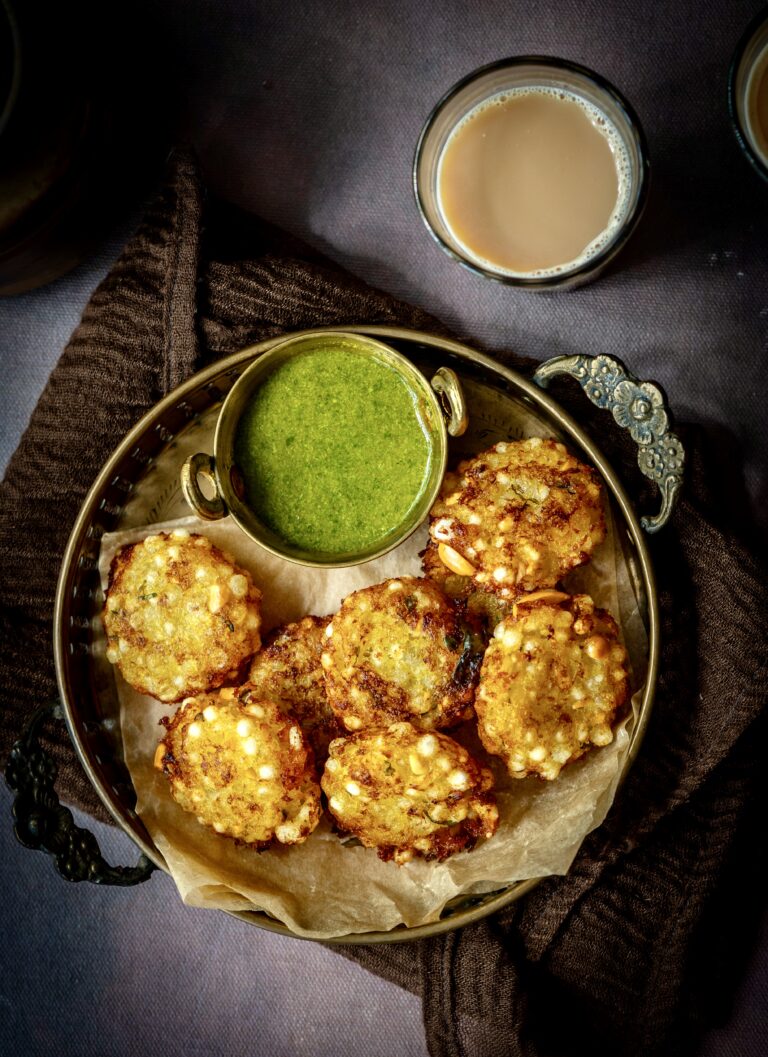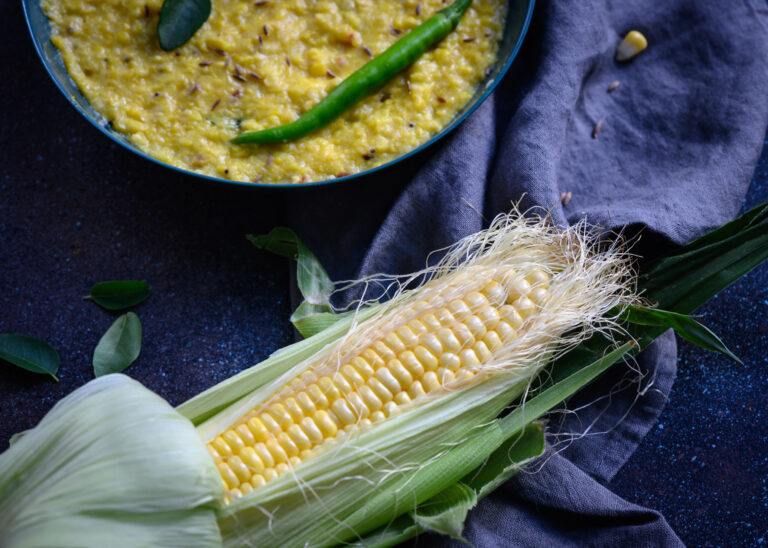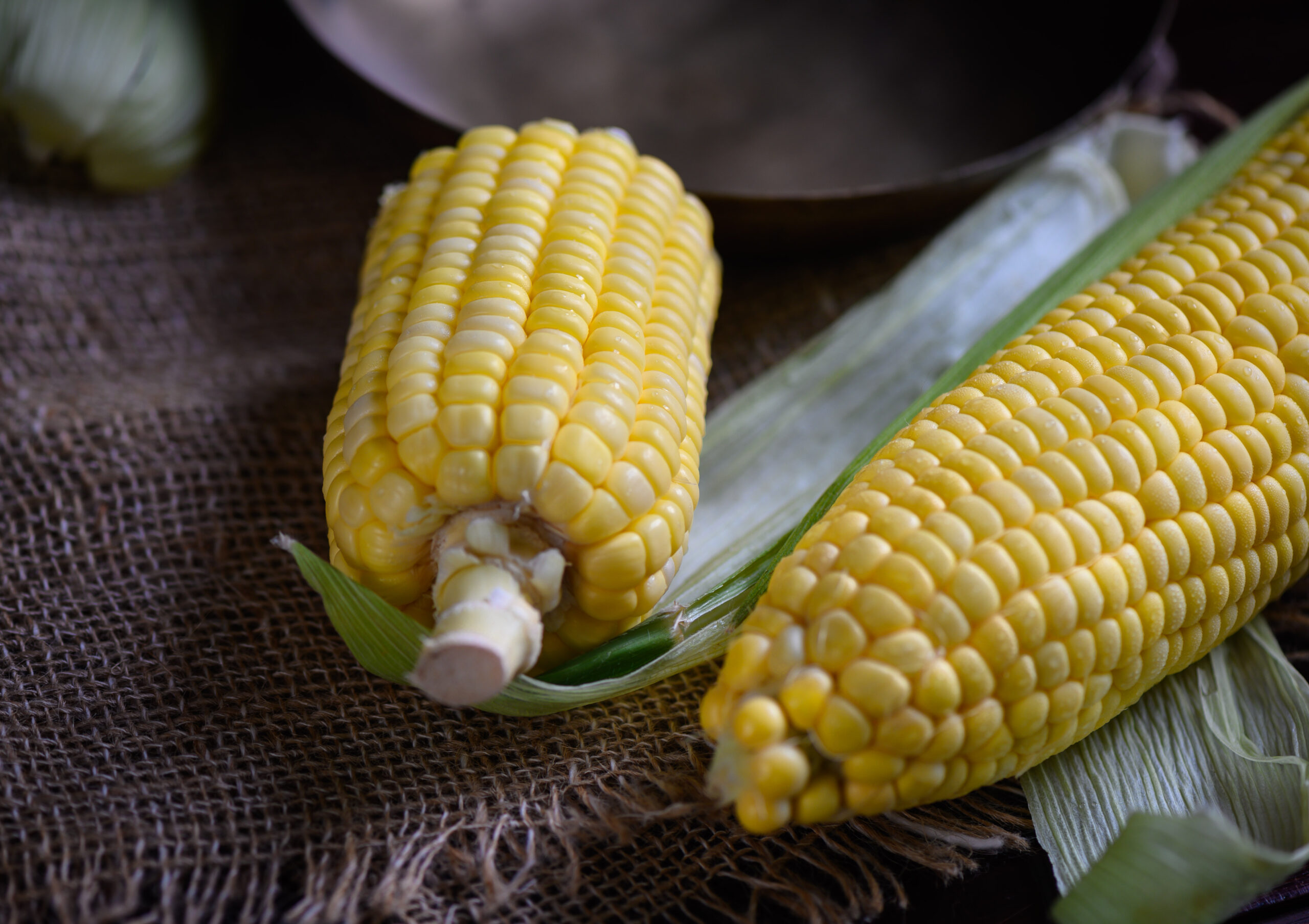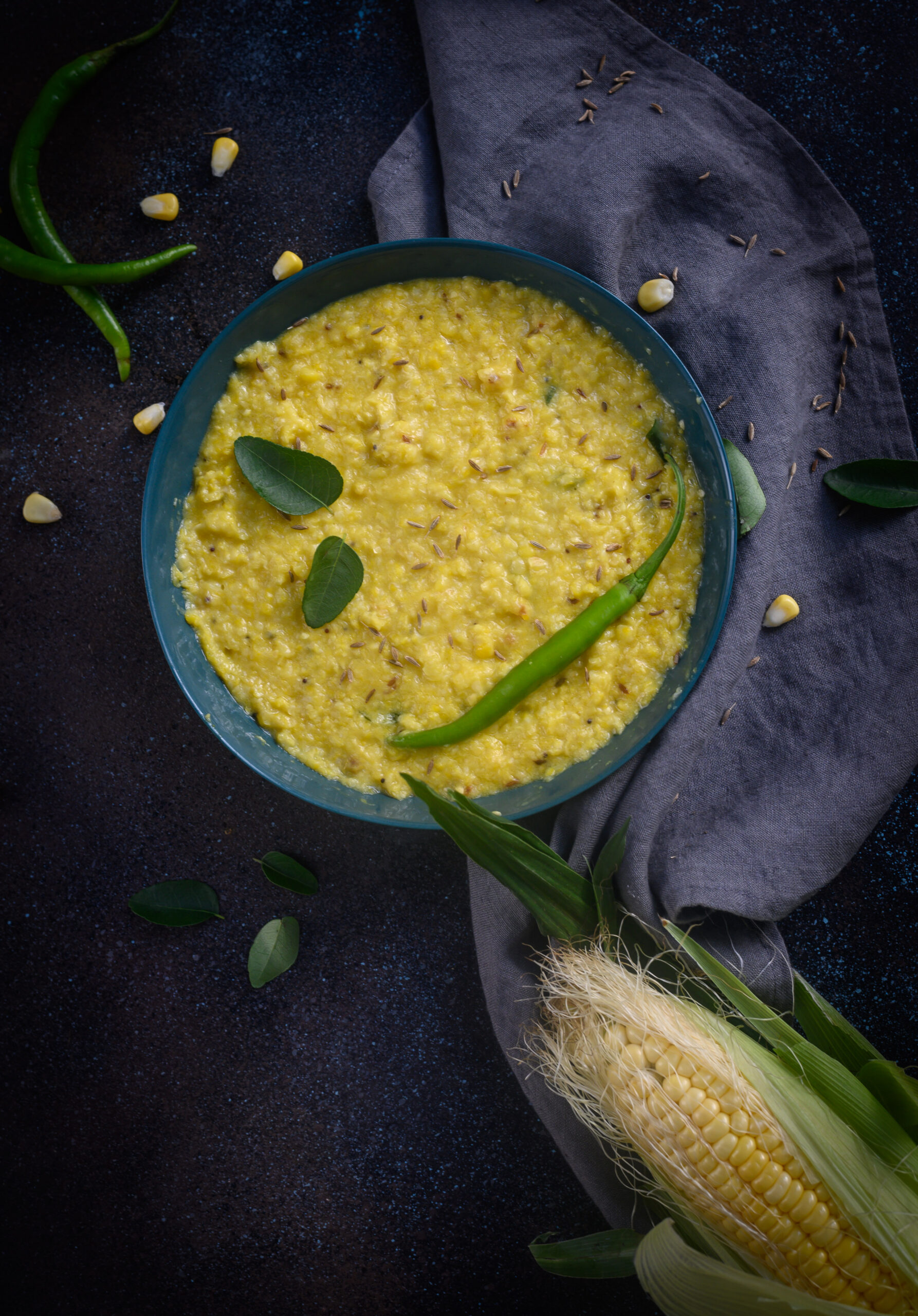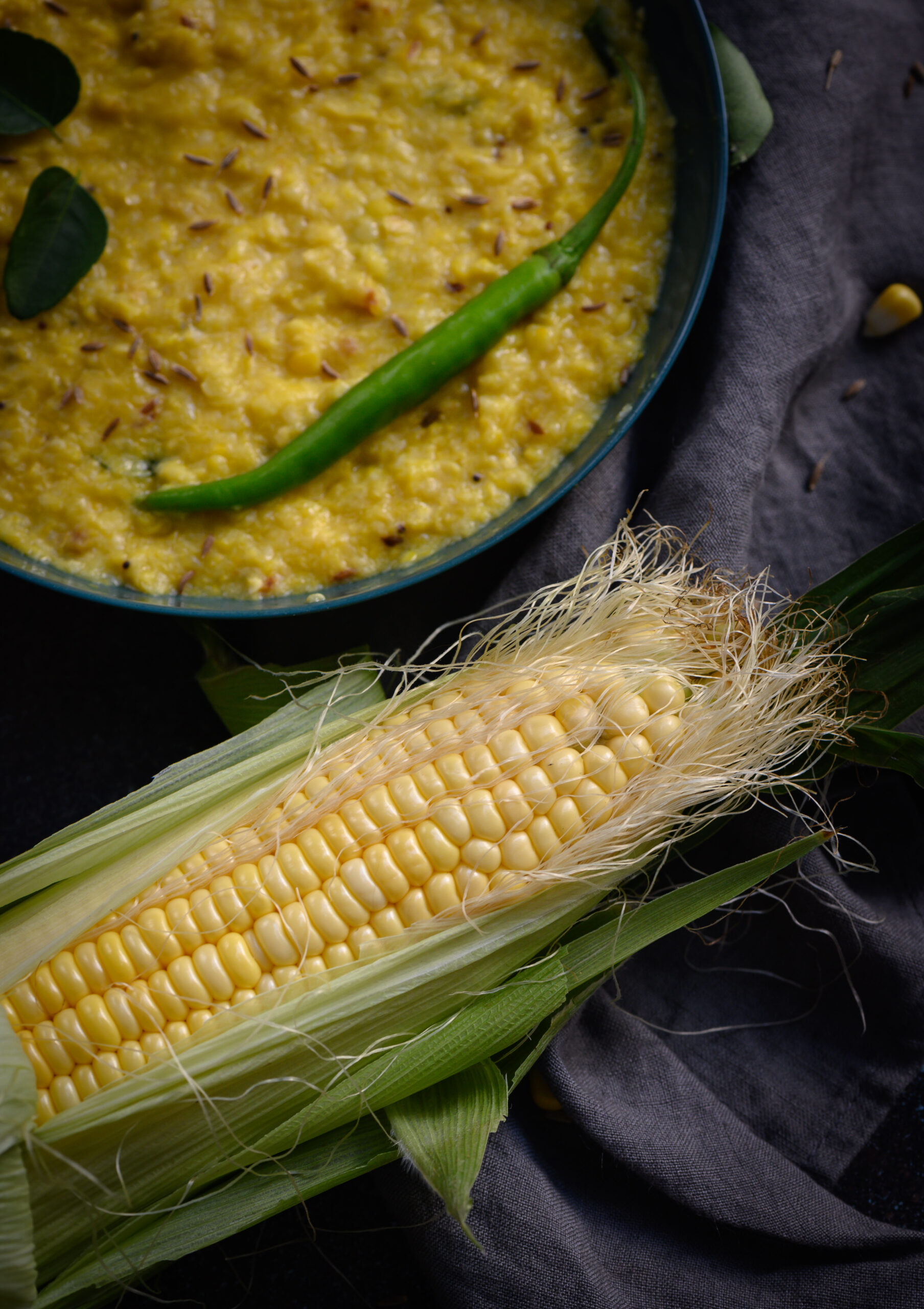Maharashtra and Gujarat are neighbouring Indian states, so there is a great deal that is shared between them. Many Gujaratis migrated to Bombay in generations prior and adapted to its culture, as a part of my family did too, and certain customs overlap as a result. A similar climate means that certain types of produce are grown in both places, which then of course go into the cuisines. Like poha, the sabudana vada is a dish that originates in Maharashtra but is often thought of as Gujarati because it is a staple for us too.
Sabudana vada is a deep-fried delight with a mashed potato base, and with sago pearls (made from taro root) added to it. Something that is unique about it is that it is a dish that is popular during certain kinds of religious fasts, but it is also so tasty that it makes its way into festive arrays as well. With Navaratri just having come to a close this year, and with Diwali not far away, it’s the perfect time to enjoy this crispy snack.
While I definitely encountered sabudana vada during childhood travels to Bombay, to me its most resonant memories from my growing years are from life at home in Chennai, where it was a dish that my mother prepared very often. Specifically, it was one of the few dishes that she consumed during her customary fast on the 11th day of each month, known as “agiyaras”. Other ritual-related specialties would include buckwheat or barnyard millet (“moraiyo”), depending on the event, the season and so on. There were also certain kinds of fasts in which grains were to be avoided, in which case the sabudana vada was perfect.
For any fast in which a single meal could be consumed during the day, such as on agiyaras, the starchiness of sabudana vada would offer energy through the day. It would be had alongside some form of dairy. I would enjoy these meals along with my mother while I was growing up, although I did not myself fast. She was also very connected to the Gujarati community in the city, and I would go with her when she went to the temple.
In this way, she inculcated certain traditions in me that I still have great admiration for. I have tried to pass them on to my children as well, even while I respect that they are free to choose the religious or spiritual paths that call to them – if they choose any at all. I have always felt that it is important for them to be aware of what is there, and what we as a family have believed in for generations. No matter what they decide on when they are older and wiser, a grounding exists that they can return to if they feel it is right for them.
This is because while I have an expansive definition of spirituality, I have found that the grounding that I had because of my own upbringing has given me a great deal. For instance, I take very seriously a ritual that I perform at home, which is the worship of Srinathji. I believe in the value system of family, which is why I accepted Him graciously into my home, and I follow closely all the practical customs. This is a part of my legacy from my parents, and I hope that it will be carried on through future generations. My children have observed these rituals of mine just as I observed my own mother’s devotion all those years ago.
I experience spirituality in other ways too, but this is the practical ritual that happens in my home daily. It is “seva”, or service, and I do it sincerely. The link between food and faith is also something that I contemplate. For instance: fasting and feasting always go hand in hand in communities around the world. There are so many beautiful customs out there in which abstinence and prayer are followed by celebrations – and all the deliciousness that come with these. All festivals have religious origins, even if they are more secular and may have other significance nowadays.
Still, whether you are fasting, feasting or simply having fun, this sabudana vada is a beautiful addition to your repertoire.
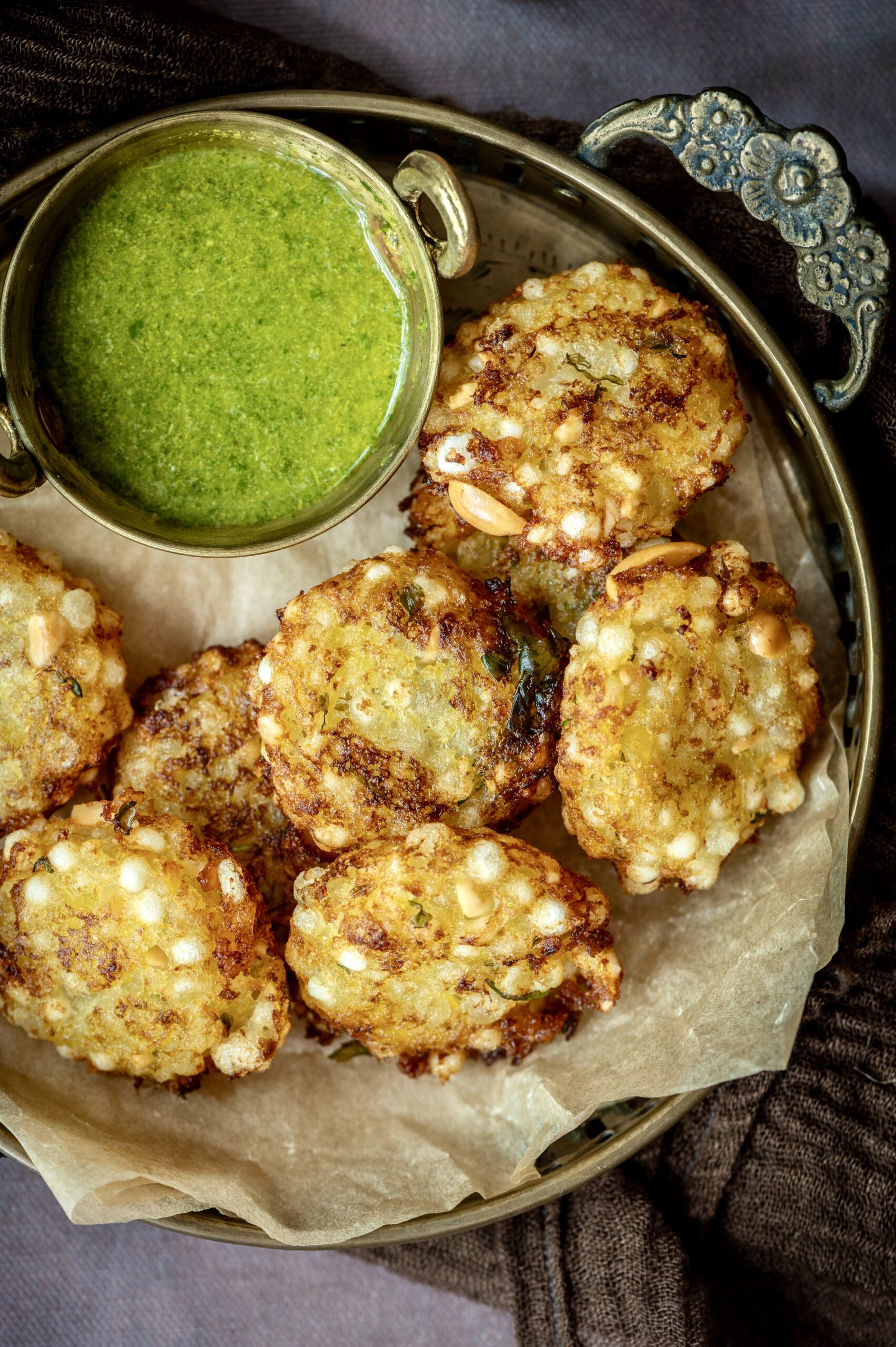
Sabudana Vada
(Yield: 15-20 pieces)
1 cup sabudana (sago pearls)
2 medium size potatoes
1 tablespoon green chili-ginger paste
Salt to taste
2 teaspoons sugar
Juice of 1 lime
3 tablespoons peanuts (coarsely ground)
1 tablespoon coriander leaves (finely chopped)
Oil for frying
Soak the sabudana for 4-5 hours. Drain for at least 1 hour. Set aside.
Boil and then mash the potatoes while they are warm. To this, add the drained sabudana.
Then, add the salt, sugar, lemon juice, green chili-ginger paste, coriander leaves and peanuts. Using your hands, blend everything until the mixture comes together.
Now, make discs from this mixture of 3-inch diameter and 1-inch thickness.
Heat the oil in a kadai and drop each vada gently into the hot oil. Allow to cook until golden and turn over. Make sure both sides are well cooked and brown. Drain on a tissue paper.
Serve with a chutney or sauce of your choice. I really wish I knew the recipes of all the incredible Maharastrian chutneys that sabudana vadas are served with in Mumbai. I would love to learn, and am excited about the trial-and-error process. If you happen to know some, drop me an email at indulgeatrestore@gmail.com or a DM on Instagram, won’t you?
Sabudana also features in a khichdi-like stir fry that is another favourite of mine. I have yet to master it in the way my mother had, but once I do, you can be sure that I will share that recipe with you too.

